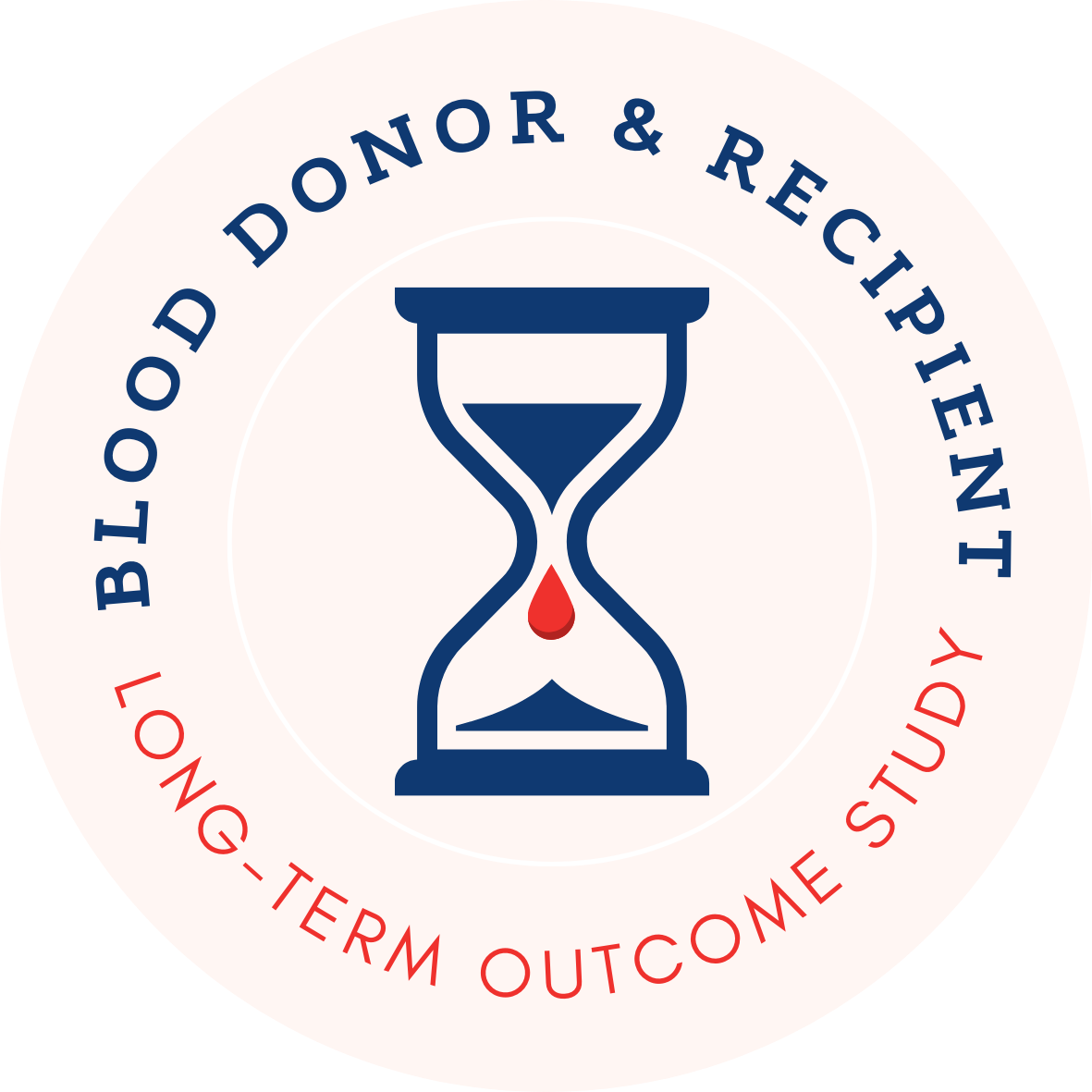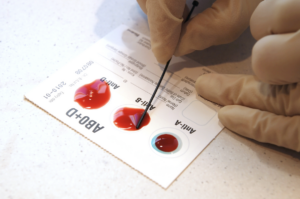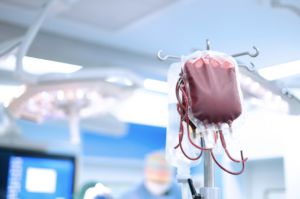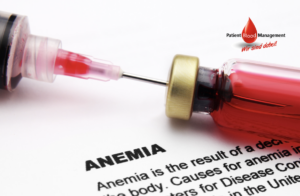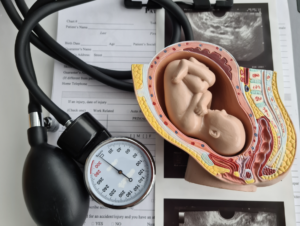
Study Director
Univ.-Prof. Dr. med. Dr. phil. Kai Zacharowski, ML FRCA FESAIC
Kai Zacharowski is an anaesthesiologist, intensive care physician and clinical pharmacologist. His research focuses on risks in anaesthesia and intensive care medicine, the complex interaction of the immune and coagulation systems, blood poisoning (sepsis) and patient blood management. He is intensively involved with blood poisoning (sepsis), blood supply in intensive care medicine and blood coagulation management. Kai Zacharowski has developed an evidence-based blood management system (Patient Blood Management, PBM) with which blood transfusions can be used more sparingly than before. His research contributes to greater patient safety in hospitals, for which he has been honoured with numerous prestigious awards.
30 Years
-
July 2009
Director of the Clinic for Anaesthesiology, Intensive Care Medicine and Pain Therapy
University Hospital Frankfurt
-
October 2016
State Chairman of the German Society for Anaesthesiology and Intensive Care Medicine (DGAI)
in Hesse, Germany
-
November 2016
Member of the German National Academy of Sciences Leopoldina
Germany
-
December 2016
German Patient Safety Award
Recent Publications
Perioper Med (Lond). 2025.
Effect of (short-term) intravenous iron supplementation in iron-deficient non-anaemic cardiac surgical patients on perioperative outcome.
While intravenous iron improves outcomes in anaemic surgical patients, the impact of iron deficiency (ID) and its treatment in non-anaemic patients remains unclear.
JAMA. 2025.
Individualized Perioperative Blood Pressure Management in Patients Undergoing Major Abdominal Surgery: The IMPROVE-multi Randomized Clinical Trial.
Intraoperative hypotension is associated with organ injury. However, it remains unknown if targeted blood pressure management during surgery can improve clinical outcomes.
J Clin Anesth. 2025.
Removal of EpCAM-positive tumor cells during intraoperative blood salvage- A pivotal multicenter clinical study (REMOVE).
Intraoperative blood salvage can reduce the need for allogeneic blood transfusions, minimizing immunological risks and infection by reusing the patient's own blood. However, in cancer surgery, a key concern limiting its use is the potential reintroduction of viable cancer cells. Additional risks, such as infection and coagulopathy, have also contributed to its limited adoption. Irradiation of salvaged blood remains an option; however, it is time-intensive and may have detrimental effects on blood cells. These challenges highlight the need for improved technologies to enable safe application in oncological procedures. One such promising tool is CATUVAB®, which removes epithelial cell adhesion molecule (EpCAM)-positive tumor cells from salvaged blood.
J Cardiothorac Vasc Anesth. 2025.
Prospective Evaluation of Thrombotic Complications After Internal Jugular Vein Cannulation for External Bypass.
To determine the incidence and subsequent complications of internal jugular vein (IJV) thrombosis after cannulation performed during cardiopulmonary bypass (CPB) to ensure adequate venous drainage during minimally invasive cardiac surgery.
Sci Rep. 2025.
Critical risks of haemoadsorption for COVID-19 patients and directions for future evaluations: a nationwide propensity score matched cohort study.
Haemoadsorption has been suggested as treatment adjunct for sepsis and septic shock, cardiac surgery, acute respiratory distress syndrome, and coronavirus disease 2019 (COVID-19). Randomised clinical trials did not provide conclusive evidence for benefits and even suggest risks in COVID-19 patients. Retrospective observational cohort study based on hospital remuneration data from all COVID-19 patients treated in intensive care units in Germany between 01/01/2020 and 12/31/2021. Regression modelling was performed for 1:1 propensity score matching of 2058 patients. Two-sided probability values for group comparisons and regression models with spline functions controlling for non-linear relationships and medically relevant interaction variables were calculated. In-hospital mortality of patients supported with haemoadsorption was significantly higher compared to matched control patients (74.6% vs. 70.3%, p = 0.0299). Haemoadsorption was associated with coagulopathy (68.0% vs. 54.9%, p < 0.0001), cardiac arrhythmia (49.2% vs. 44.2%, p = 0.0272), and cardiopulmonary resuscitation (CPR, 19.3% vs. 13.1%, p = 0.0002). Further, haemoadsorption increased the chance of death for COVID-19 patients without septic shock (odds ratio, OR [within a 95% confidence interval, CI]; 1.40 [1.05-1.86]) and did not improve survival of septic shock patients (1.19 [0.85-1.67]). Independent variables with a significant impact on mortality included the use of extracorporeal membrane oxygenation (ECMO, 2.15 [1.68-2.76]) and CPR (1.60 [1.03-2.45]). The timing of the haemoadsorption therapy had no effect on patients´ outcomes. Due to inconclusive evidence for benefit and potential harm, haemoadsorption therapy should be limited to thoroughly designed clinical trials before introduced into clinical routine in the context of COVID-19.
Minerva Anestesiol. 2025.
Comparative analysis of large language models and clinician responses in patient blood management knowledge.
Large language models (LLMs) are increasingly used in the medical field and have the potential to reduce workload and improve treatment procedures in clinical practice. This study evaluates the capabilities of LLMs to answer common questions related to patient blood management (PBM) and compares their performance to the expertise of clinicians from two university hospitals.
J Clin Med. 2025.
Efficacy and Safety of a Balanced Gelatine Solution for Fluid Resuscitation in Sepsis: A Prospective, Randomised, Controlled, Double-Blind Trial-GENIUS Trial.
: Sepsis is a leading cause of death in noncoronary intensive care units (ICUs). Fluids for intravascular resuscitation include crystalloids and colloids. There is extensive clinical evidence on colloid use, but large trials comparing gelatine with crystalloid regimens in ICU and septic patients are lacking. This study aimed to determine whether early, protocol-driven volume resuscitation using a gelatine-based regimen achieves hemodynamic stability (HDS) more rapidly than a crystalloid-based regimen in septic patients. : This prospective, controlled, randomised, double-blind, multinational phase IV study compared two parallel groups of septic patients receiving a gelatine-based regimen (Gelaspan 4% and Sterofundin ISO, B. Braun Melsungen AG each, at a 1:1 ratio) or a crystalloid regimen (Sterofundin ISO). Primary endpoint was time to first HDS within 48 h after randomisation. Secondary endpoints included fluid overload, fluid balance, and patient outcomes. : 167 patients were randomised. HDS was achieved after 4.7 h in the gelatine group and after 5.8 h in the crystalloid group ( = 0.3716). The gelatine group had a more favourable fluid balance at 24 h (medians: 3463.00 mL vs. 4164.00 mL; = 0.0395) and less fluid overload (medians: 4296.05 vs. 5218.75%; = 0.0217). No differences were observed in serious adverse events or mortality. : The study provided clinical evidence of balanced gelatine solution for volume resuscitation in septic patients, although it was terminated prematurely. The early and protocol-based administration of gelatine was safe and effective in the enrolled patient population. Time to HDS was not different between groups but the gelatine-based regimen led to better fluid balance and less fluid overload.
Eur J Anaesthesiol. 2025.
Anaesthesia and climate: Are we getting the science right?
Front Immunol. 2025.
The fibrin-derived peptide FX06 protects human pulmonary endothelial cells against the COVID-19-triggered cytokine storm.
Coronavirus disease 2019 (COVID-19), caused by severe acute respiratory syndrome coronavirus 2 (SARS-CoV-2), has been a major health emergency since its emergence in late 2019. Endothelial dysfunction is a hallmark of COVID-19, leading to severe illness, i.e. coagulopathy, multi-organ failure. FX06, a fibrin-derived peptide naturally occurring in the human body, formerly known as Bβ, is a promising therapeutic candidate for endothelial complications like capillary leakage in COVID-19 and other forms of acute respiratory disorders. The aim of this project is to investigate whether FX06 can attenuate COVID-19 cytokine-triggered inflammatory processes .
BJA Open. 2025.
Systemic role of orexin A, substance P, bradykinin, and DABK in severe COVID-19 and 2.5-yr follow-ups: an observational study.
Orexin A regulates sleep-wake cycles, arousal, and energy homeostasis, linking it to the renin-angiotensin system and substance P. Dysfunction in these pathways occurs in acute and long-term COVID-19, including post-COVID syndrome.
Intensive Care Med Exp. 2025.
Sex- and age-related differences in LPS-induced lung injury: establishing a mouse intensive care unit.
Mouse models are widely used to establish new therapy concepts for acute lung injury, but the transfer of therapeutic approaches into the intensive care unit often failed. To establish a mouse intensive care unit to adequately reflect the patient's situation and to investigate sex- and age-related differences in response to lipopolysaccharide.
Int J Mol Sci. 2025.
Glibenclamide Serves as a Potent Vasopressor to Treat Vasoplegia After Cardiopulmonary Bypass and Reperfusion in a Porcine Model.
The hemodynamic stabilization of patients after complex cardiac surgery is a daily challenge. The use of high doses of catecholamines is common but has potential adverse effects. Glibenclamide, a K blocker, seems to attenuate vasoplegia in different animal models of septic shock. Therefore, the aim of this study was to investigate the impact of Glibenclamide on the vasoplegic syndrome after cardiopulmonary bypass in a porcine model. In this experimental study, 20 landrace pigs were randomized into two groups and examined: In the control group, standard medical therapy, including norepinephrine, was used, and in the study group standard medical therapy plus additional Glibenclamide was administered. Following general anesthesia, prolonged cardiopulmonary bypass and aortic cross-clamping was performed. In the study group, Glibenclamide was administered 45 min after weaning from cardiopulmonary bypass. The dosage used was 10 mg/kg as a bolus, followed by a continuous infusion of 10 mg/kg/h. Hemodynamic and laboratory measurements were performed. Glibenclamide had a relevant effect on circulatory parameters. With increasing vascular resistance and blood pressure, norepinephrine was able to be reduced. While the heart rate dropped to physiological levels, the cardiac index decreased as well. The results lead to the conclusion that Glibenclamide was able to break through vasoplegic syndrome and could therefore serve as a potent drug to stabilize patients after cardiac surgery.
Transfus Med Hemother. 2025.
Transfusion Risk in Open, Laparoscopic, and Robotic-Assisted Surgery: A Propensity Score Matched Case-Control Study across Surgical Disciplines.
Robotic-assisted surgery is increasingly performed in various surgical disciplines demonstrating improved oncological and functional outcomes compared to conventional surgery.
Sci Rep. 2025.
Persistent mortality in critical COVID-19 ICU cases from wild-type to delta variant: A descriptive cohort study.
The SARS-CoV-2 pandemic led to significant advancements in treatment and vaccination, contributing to a decline in overall COVID-19-related mortality. However, it remains unclear whether the mortality rate for critical cases treated on intensive care units has also decreased. This multicentric, multinational retrospective observational study analyzed 447 critically ill COVID-19 patients treated on ICUs across ten study centers in Germany and Austria. Patients were categorized into two periods: period 1 (March 2020 to May 2021, n = 316) and period 2 (June 2021 to January 2022, n = 131). Despite evolving treatment strategies and widespread vaccine availability in period 2, 30-day mortality remained unchanged (30% in period 1 vs. 37% in period 2; HR 1.26, 95% CI: 0.90-1.79, p = 0.181). Further outcomes, including ICU-free days (p = 0.735), ventilatory support-free days (p = 0.699), vasopressor-free days (p = 0.379), and dialysis-free days (p = 0.396), also showed no significant differences. Notably, 81% (106 of 131) of ICU patients in period 2 were unvaccinated, underscoring the persistent vulnerability of this group. These findings suggest that while public health measures reduced overall COVID-19 severity, critical illness remained highly lethal. Further research is needed to explore targeted interventions for high-risk ICU patients and to better understand the factors contributing to persistent mortality despite medical advancements.
Registry Study for Research of Blood Donor and Recipient Long-Term Outcomes
The latest news, articles, and resources on transfusion medicine – follow our deputy study director, Dr Jan Kloka, on LinkedIn.
Address
Universitätsklinikum
Frankfurt am Main
KAIS – Haus 13a
Theodor-Stern-Kai 7
60596 Frankfurt am Main
Contact
© Copyright 2024 by transfusionregistry.org
